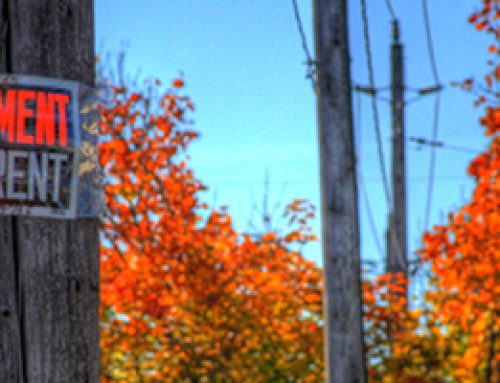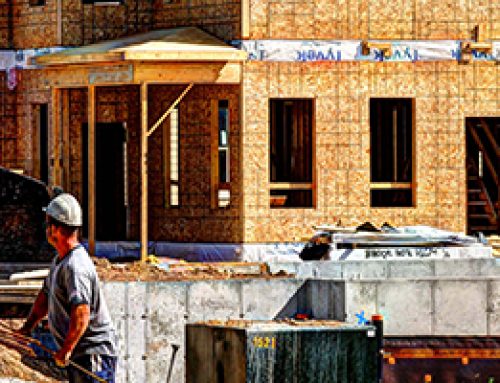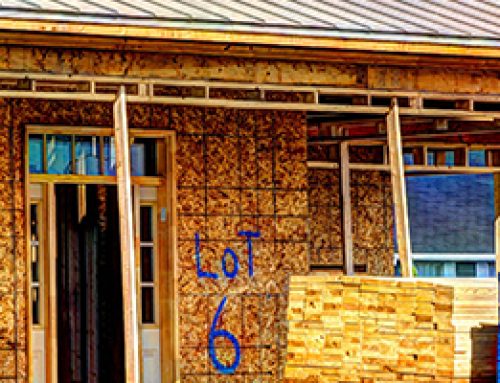Wait times and availability of affordable and subsidized housing in Niagara
Wait times and availability of affordable and subsidized housing in Niagara speaks to the need for transitional housing and demands that must be met. That is, the longer the wait times for housing, the greater the need for transitional housing supports.
A January 2014 chart of wait times for affordable housing, categorized by age, number of bedrooms and local area within Niagara can be found on the Niagara Regional Housing website.

Source: Niagara Regional Housing
Retrieved From: http://www.nrh.ca/pdf/Wait%20Times%20Chart.pdf
An April 2013 chart of available housing units in Niagara, categorized by residence type and provider type can be found on the Niagara Regional Housing website.


“Households living in non-profit and co-operative housing represent all segments of the community – seniors, families, and individuals and people with physical or mental health challenges. Generally, 25% of the units are designated as market rent units. The remaining 75% of units are offered to households that pay a rent geared to their income. The rent-geared-to-income calculation is based on 30% of the household’s gross income plus parking (if applicable) and an adjustment for the cost of utilities.”
Source: Niagara Regional Housing
Retrieved From: http://www.nrh.ca/pdf/Housing%20Provider%20Fact%20Sheet.pdf
Core Housing Needs
A household is considered to be in core housing need if any one of the following three conditions is met:
- Affordability: more than 30 per cent of income is spent on housing
- Suitability: housing is too small for the size of the household
- Adequacy: housing is in need of major repair

The above chart displays the 2006 proportion of households and individuals who have/need core housing.
Source: Canadian Mortgage and Housing Corporation based on Statistics Canada Census data for the St. Catharines-Niagara CMA.
Retrieved From: http://www.niagararegion.ca/social-services/technical-report/images/Chapter-2/2-2-Percentage-of-Population.jpg

Source: Niagara Region
Retrieved From: http://www.regional.niagara.on.ca/government/departments/public-works/pdf/Asset-Managment-Plan-2014.pdf
Homelessness and Use of Shelters
Homelessness and the use of shelters in Niagara is a multifaceted issue; it observes the presence and use of transitional housing. It speaks to the transitional housing needs of those who cannot afford traditional housing.
The Niagara Region Housing and Homelessness Action Plan (HHAP) Technical Report includes a number of measures under the category “Current Housing Needs in Niagara”, including:

Source: Niagara Region Community Services
Number of Households and Individuals Homeless or at Risk of Homelessness

Source: Niagara Region Community Services HHAP Technical Report
Retrieved From: http://www.niagararegion.ca/social-services/technical-report/current-need-report.aspx
Current Housing Need in Niagara – Niagara Region Community Services, December 2013
Niagara Region Community Services offers information about current social service use, affordable housing, transitional housing, and shelter services on the Niagara Region website, including the following:
Affordable Housing
A total of 6,016 households (10,641 individuals) are on the affordable housing waitlist for Niagara as of Dec. 31, 2013 (seniors – 2,240; households with no dependents – 1,765; families – 2,011). Within the past three years, the waitlist has grown by 9 per cent with the biggest increase coming from seniors and families. Wait times range from 1.25 years to almost ten years, and vary according to the location of the units and the number of selections made by the household. The current stock of over 7500 affordable housing units is not keeping pace with the growth of the wait list. Furthermore, just under half of the current affordable housing stock is between 30- and 60 years old. This means a growing amount of resources will need to be invested in maintaining the current stock and cannot be used to create new affordable housing.
Niagara Housing Waiting List, 2003 – 2013

Source: Niagara Regional Housing
Six hundred and twenty-six households were housed in 2013. Despite this the number of households currently on the waiting list for affordable housing continues to be a challenge. Since 2002 the waiting list in Niagara has increased by 42 per cent. The greatest increase started during the 2009 recession and has left a lasting impact on the affordable housing system.
Transitional Housing
Number of Households & Individuals Accessing Transitional Housing Services

Source: Niagara Region Community Services Consolidated Homelessness Prevention Program, Community Homelessness Prevention Initiative and Homelessness Partnering Strategy Reports
Transitional housing is an intermediary housing option between emergency shelter and stable housing. It provides residents with a supportive environment to live while they re-establish themselves in the community. A significant increase in the number of individuals seeking transitional housing services was seen just after the 2009 recession. While the recession has ended, its effects on the community are continuing to be seen and felt by housing service providers.
Shelter Services
Number of Shelter Beds Available in Niagara Region
| Number of Beds or Mats | |
| Individual (16+) and Families | 22 |
| Immigrants and Refugees | 16 |
| Individual (16+) | 25 |
| Individual (18+) | 35 |
| Males (18+) | 22 |
| Violence Against Women | 64 |
| Women and Children | 52 |
| Youth | 20 |
| Total | 256 |
Source: Niagara Region Housing and Homelessness
In Niagara there are a total of 256 shelter beds that provide services to a variety of target groups, including victims of violence, youth and recent immigrants and refugees:
- Regionally funded homeless shelters: 11 shelters with total of 167 permanent beds and an additional 25 beds during the winter season.
- Provincially funded Violence Against Women shelters: funds 64 beds
The majority of homeless shelters are funded on a per diem basis, with funds coming from both the provincial and municipal government. It is generally recognized that this funding is not sufficient to cover the overall costs associated with running a shelter.
Effective January 1, 2013, the province has capped hostel funding for emergency hostels that are funded through the Region as part of its consolidation of programs related to homelessness.
Violence Against Women shelters are funded directly by the Ministry of Community and Social Services. These shelters receive a set amount of funding for the year regardless of the number of beds that are filled.
Emergency Shelter Usage, 2013

Source: Niagara Region Community Service
On average, 86 per cent of shelter beds were occupied nightly in 2013. Prior to the end of 2012, for several years Niagara had been experiencing a downward trend in its emergency shelter occupancy, suggesting that less fewer people in Niagara are in need of emergency shelter services and/or that they do not need to stay as long. It may also be a result of the movement towards supporting more services aimed at preventing homelessness, and the number of people accessing prevention and supported transitional housing services. However, Niagara experienced an increase in the number of individuals accessing shelter accommodations in 2013 (4,516) over previous years (4,428 in 2012 and 4,170 in 2011).
On the surface, the occupancy rate in 2013 increased by a significant percentage compared to 2012, but due to changes in the data collection system for emergency shelters that took effect January 1, 2013, data analyses comparing data from 2012 and 2013 would not be accurate.
Since 2009 the average number of shelter stays by families has increased. Families stayed an average of 6.7 nights in a shelter in 2008, but stayed an average of 12 nights in 2011. The average stay in 2012 dropped slightly to 10.5, but 2013 saw a large increase over the previous year. Longer stays are not unexpected given the growth in demand by families for affordable housing, and high rent levels for family sized rental units.
Source: Niagara Region Community Services
Retrieved From: http://www.niagararegion.ca/social-services/technical-report/current-need-report.aspx
Housing Initiatives (including Transitional and New and Rent Supplement)
Youth Reconnect Program
A 2012 report about the Youth Reconnect Program led by The Raft (Niagara Resource for Youth) can be found on the Canadian Homelessness Research Network’s Homelessness Hub. The program is highlighted as an innovative approach to solving youth homeless in rural areas. By creating a Niagara-wide response, this program helps youth remain connected to social supports and stay in school, therefore reducing their vulnerability and preventing a first episode of homelessness.
Prior to the introduction of the program, young people would have to leave their home communities and travel to larger urban centres to find housing and/or employment, putting themselves at increased risk of negative consequences. Preventing young people from becoming homeless is one of the most powerful weapons in the fight to end homelessness. Rural communities across Canada can replicate the Youth Reconnect Program model and free more young people from a life of social exclusion.
Source: Canadian Homelessness Research Network, Homelessness Hub
Retrieved From: http://www.niagaraknowledgeexchange.com/resources-publications/niagara-resource-service-for-youth-st-catharines-ontario/
The Wellness Supportive Living Program for seniors and adults with disabilities provides comprehensive support services to enhance the independence and improve overall well-being of older people at risk, in four identified social housing buildings in Niagara. This program is a partnership with Ontario March of Dimes, Niagara Region, Niagara Regional Housing and Community Support Services of Niagara.
Services include on-site attendant care, personal care, medication reminder, cleaning the home, volunteer visiting, security checks, social and recreational programs as well as exercise and wellness clinics.
Source: Community Support Services of Niagara
Retrieved from: http://www.cssn.on.ca/index.php/services
The Welcome Home Niagara Homeownership Program is offered by Niagara Regional Housing, to:
- Make home ownership a reality for low to moderate income households in Niagara
- Ease the demand for rental housing by assisting renter households to buy affordable houses
- Offer down payment assistance for homebuyers through a 5% forgivable loan to a maximum
of $12,302 - Encourage developers to build affordable housing
Source: Niagara Regional Housing
Retrieved From: http://www.nrh.ca/pdf/Welcome-Home-Niagara-Facts.pdf
Habitat for Humanity Niagara (HHN) volunteers have built 42 homes built in the past 21 years, to help families in Niagara improve their lives through home ownership. HHN is an affiliate of Habitat for Humanity Canada and part of Habitat for Humanity International which operates world-wide in providing affordable homes to families in need. Habitat for Humanity is founded on the belief that decent, affordable housing is a basic human right.
HHN, founded in 1993, partners with low-income families who:
- currently live in substandard housing
- are willing to volunteer 500 hours of sweat equity
- will repay a zero-down payment, interest-free mortgage
Monthly payments set at no more than 25% of the family’s gross monthly income. Home ownership for these families enables them to rely less on social assistance, build equity and break the cycle of poverty.
HHN works in partnership with Niagara College and the District School Board of Niagara in the Youth/Student Build Program, which integrates academic instruction and on-the-job skills development training, providing students with experience and knowledge to become skilled trades workers in the construction industry.
A 2013 Canada Mortgage and Housing Corporation Research Highlight report, “Building Families’ Futures and Opportunities through Habitat Homeownership” summarizes results of a 2012 national survey completed by 326 Habitat households (families who purchased a home through Habitat for Humanity Canada) from all regions of Canada. The study examined social, financial and other outcomes for these families.
Study findings specifically cite improvement in children’s school performance and well-being since moving into their Habitat home. Improved health was reported by more than 75% of survey respondents; 86% indicated they were happier in their new housing; and 89% cited improved family life as a benefit. The majority rated their new neighbourhood as safer, better for children, friendlier and more convenient than where they had previously lived.
Source: CMHC
Retrieved From: http://niagaraknowledgeexchange.com/wp-content/uploads/2013/07/CMHC-Building-Families-Futures-2013.pdf







